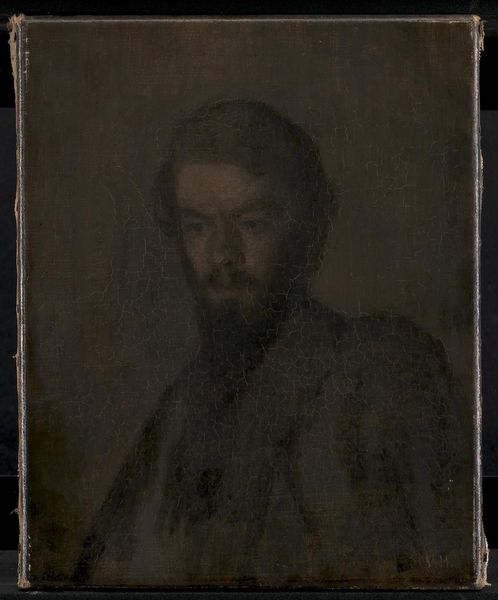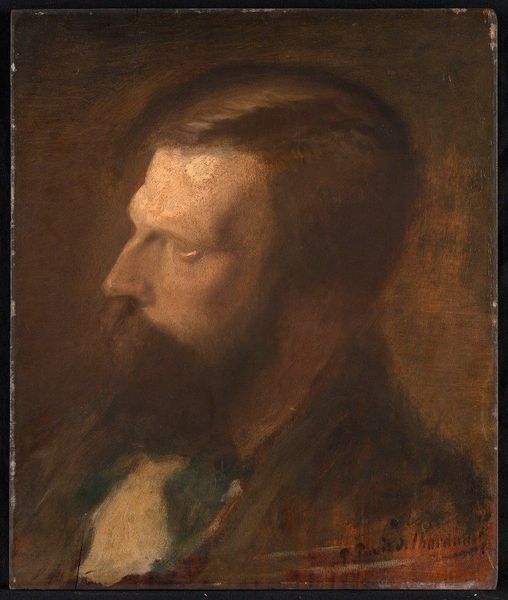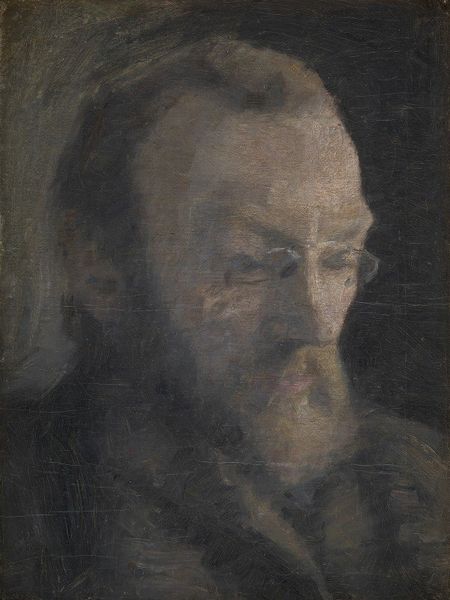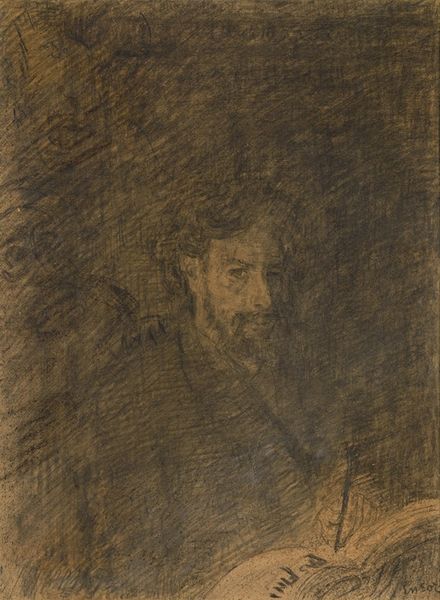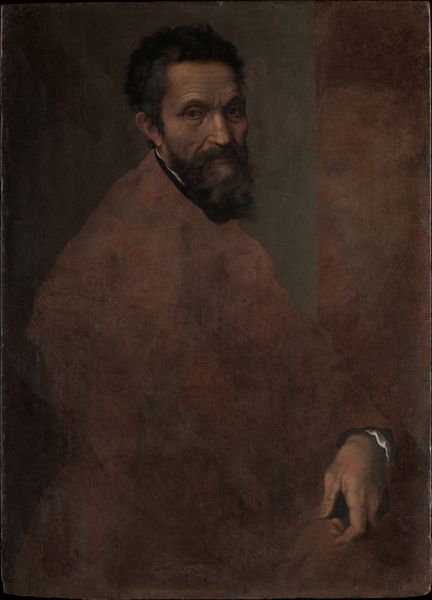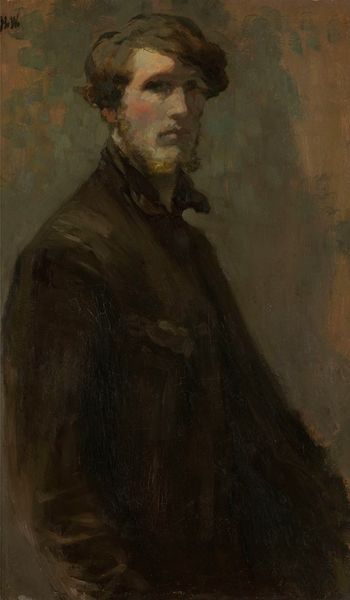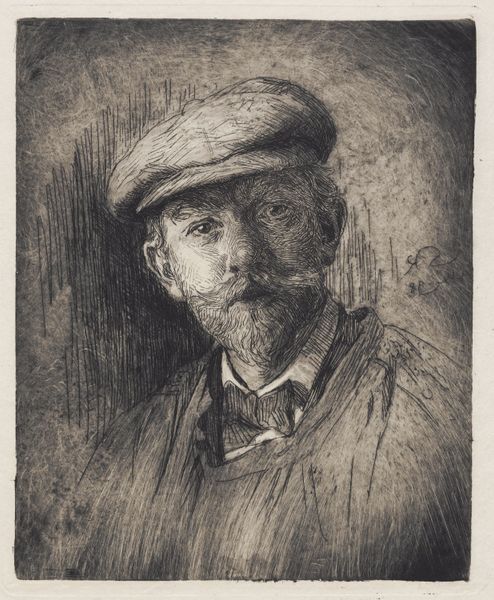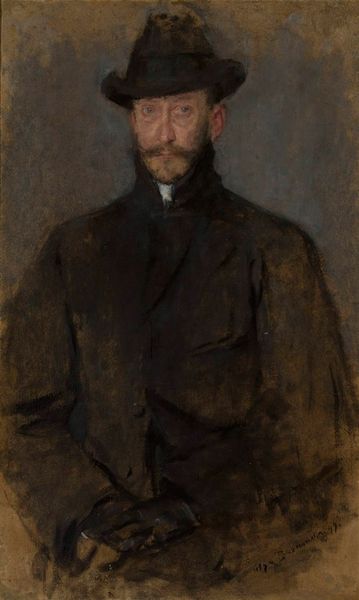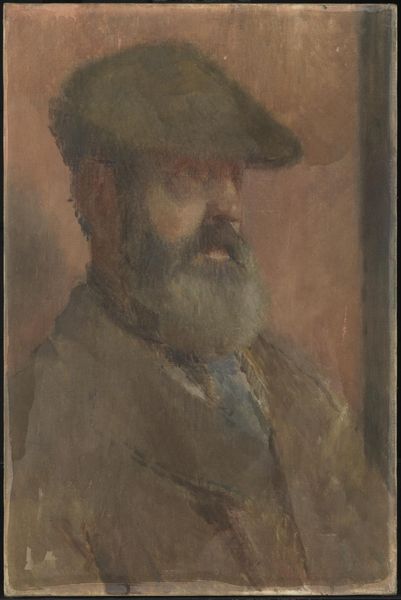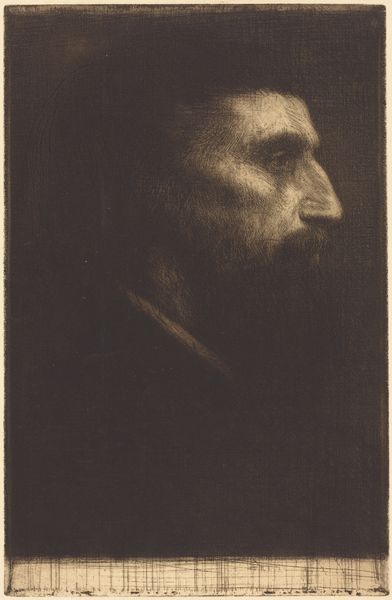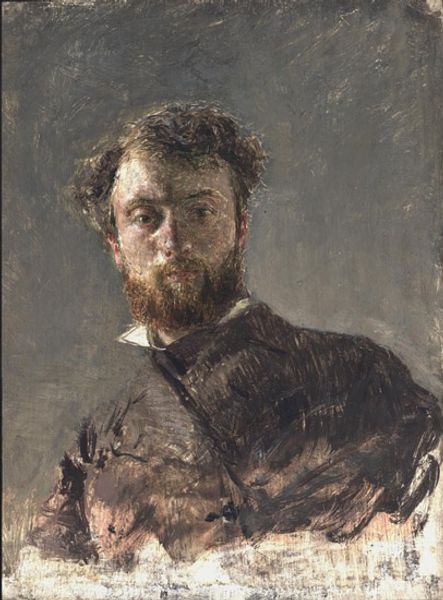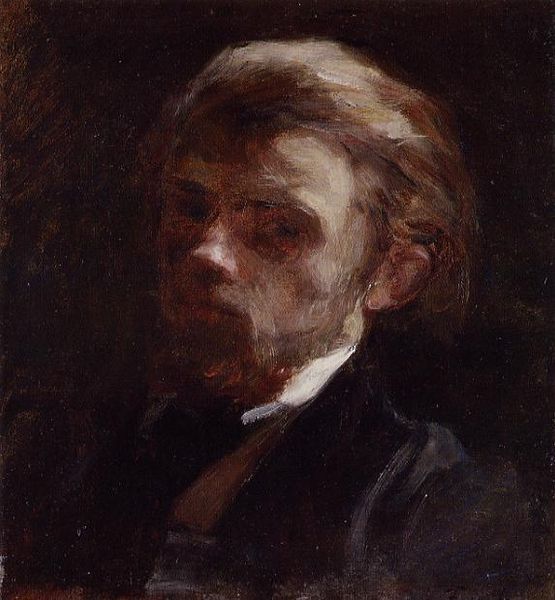
painting, oil-paint
#
portrait
#
painting
#
oil-paint
#
modernism
#
realism
Dimensions: 28 cm (height) x 22 cm (width) (Netto)
Curator: Vilhelm Hammershøi painted this study, entitled "Henry Madsen. Skitse," around 1904, utilizing oil paints. Editor: There's a somber quality, a deep shadow clinging to the subject. The restrained palette really amplifies the quiet intensity of his gaze. I immediately want to explore that tension. Curator: Absolutely. Hammershøi was a master of evoking mood through light and shadow. Given his social circles in Copenhagen, this work should also be seen in the light of an active artist community, since portraiture acted as a key role in their dynamic exchanges. Editor: In that milieu, wouldn't such a sketch signal not just likeness but belonging, a marker of a network's cultural capital? Is Madsen more than simply an individual here, embodying also certain cultural codes from that particular point in time? Curator: Precisely! Moreover, the 'sketch' designation points to a fascinating performance around the casual artistic gesture in portraiture—that feigned nonchalance speaks volumes about the status dynamics that inform the construction of Hammershøi's image, both inside and beyond the Copenhagen circles. Editor: It almost feels like an attempt to domesticate the male gaze. Hammershøi directs it not outwards, towards the viewer as subject, but rather in. To acknowledge that is particularly insightful to consider regarding how masculinity had changed as a result of cultural evolution. Curator: True. One could argue, that within this artistic exchange, Hammershøi pushes up against traditional expectations within that social milieu. It asks viewers to question what kind of identities were at play in the social theater of that era, making the act of looking both conscious and subtly charged. Editor: This intimate portrayal serves as an invitation. By creating something that does not simply embody aesthetic value, but that also incites thought through dialogue, it surpasses a simple image of likeness, acting as a point of dialogue within contemporary interpretations about image and identity. Curator: It leaves us thinking about the enduring impact that social standing had at that moment and how that shaped cultural values. Editor: It reminds us of the importance of recognizing the complex social webs that support art history and continue shaping contemporary viewpoints of identity to this day.
Comments
No comments
Be the first to comment and join the conversation on the ultimate creative platform.
